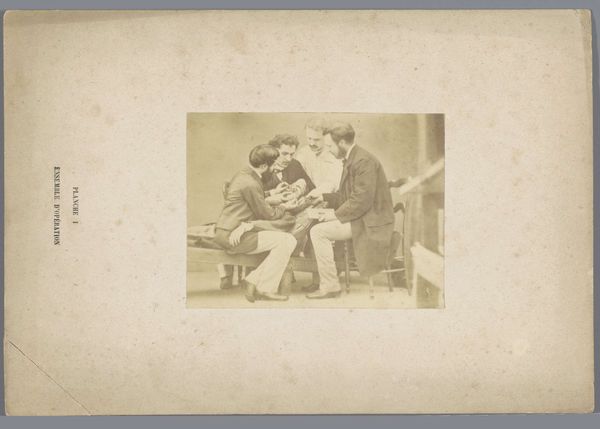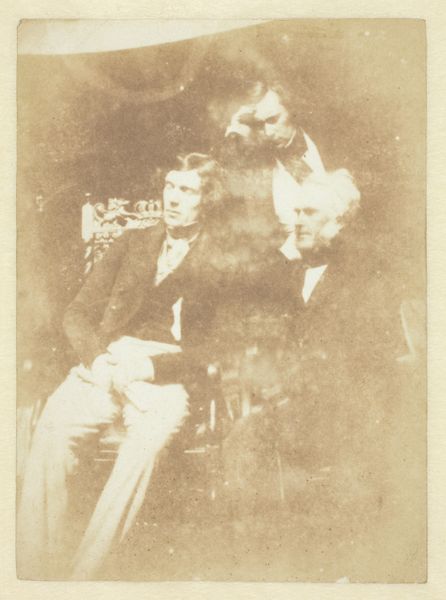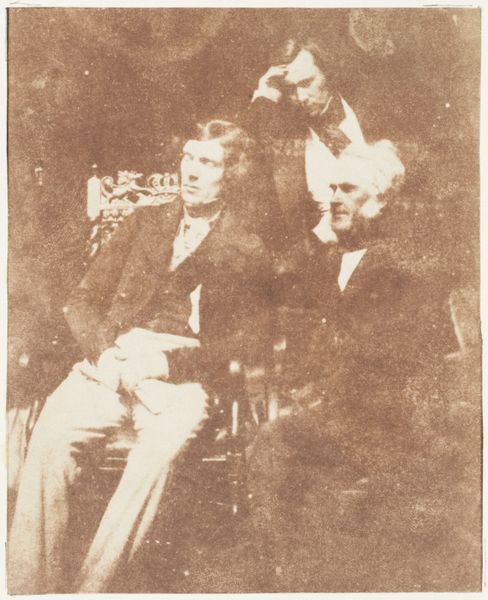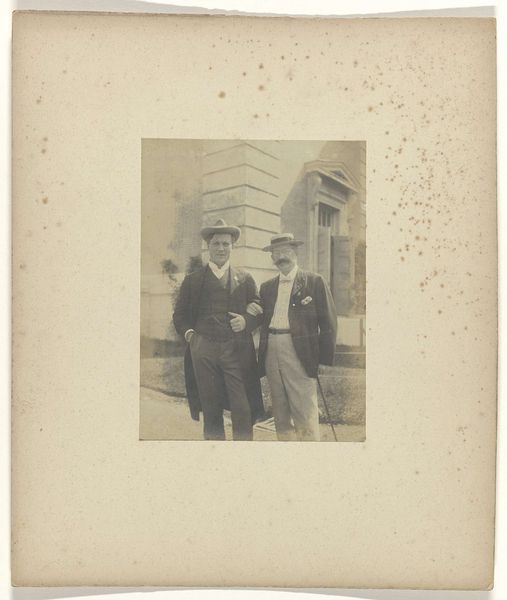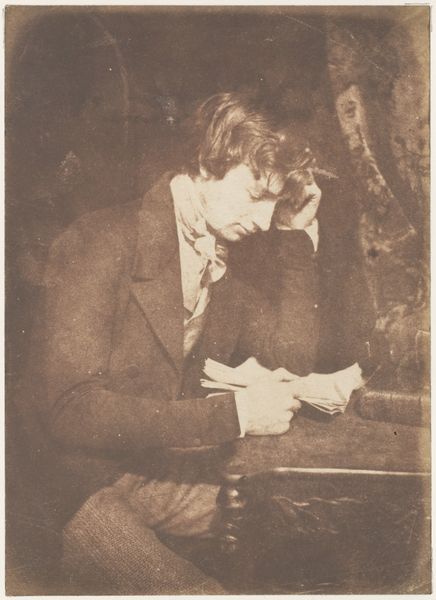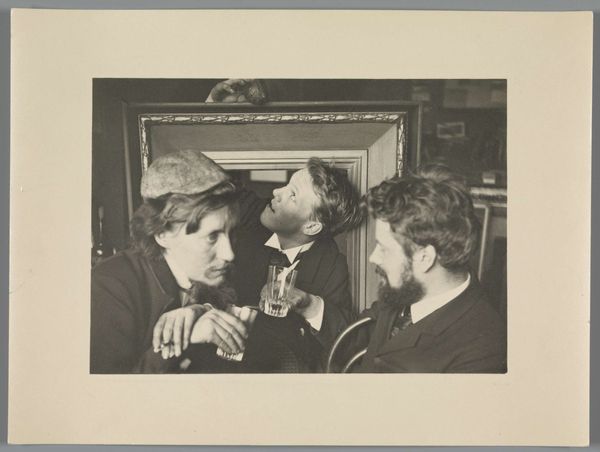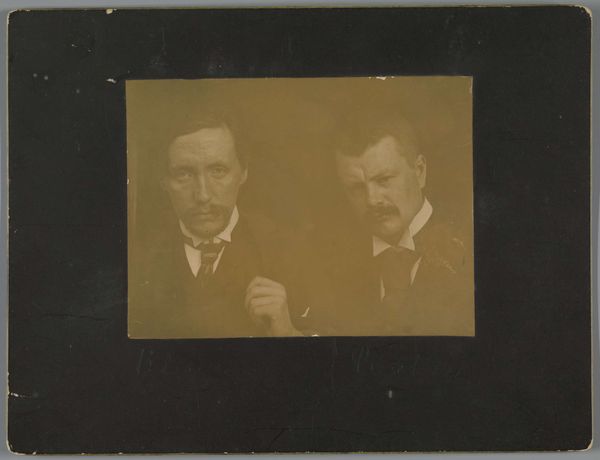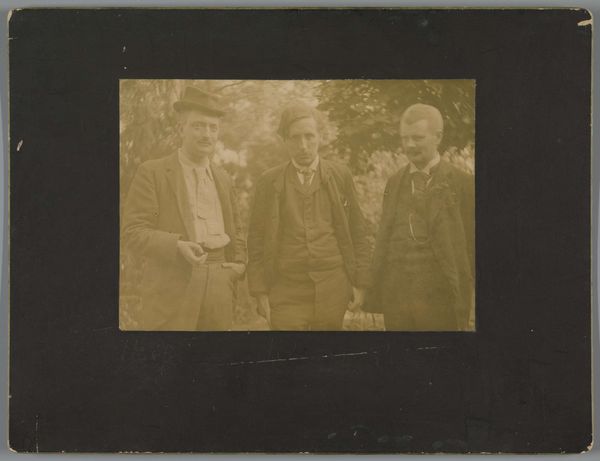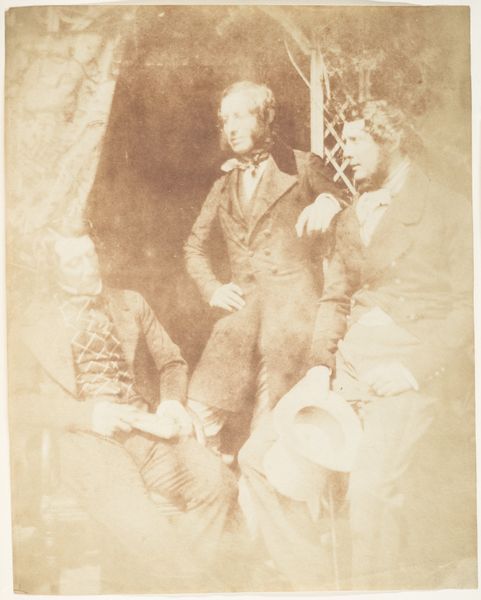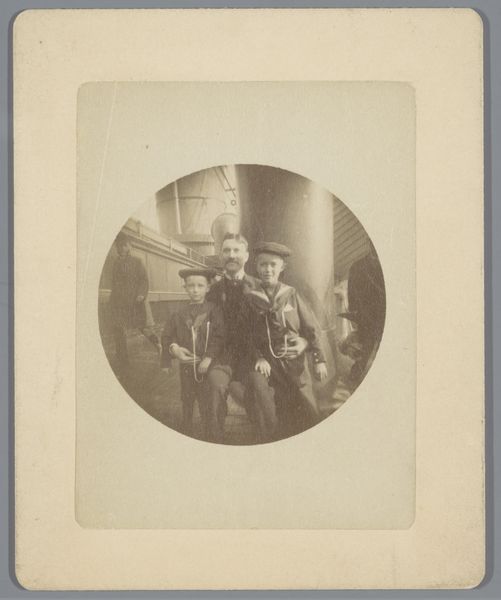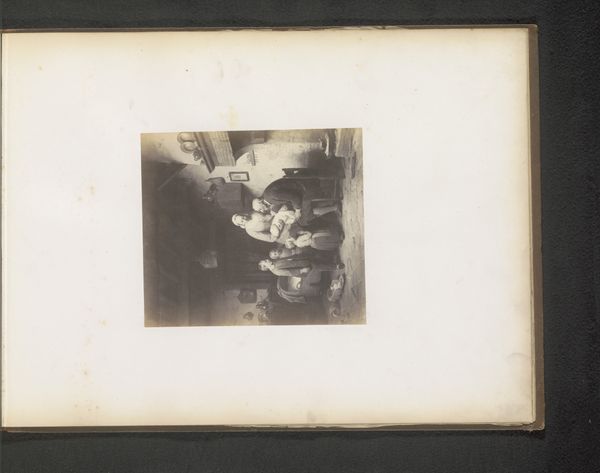
daguerreotype, photography
#
portrait
#
daguerreotype
#
archive photography
#
photography
#
historical photography
#
portrait reference
#
romanticism
#
men
Copyright: Public Domain
Curator: This is “Thomas Duncan and His Brother,” a daguerreotype photograph crafted between 1843 and 1847 by the pioneering Scottish duo, Hill and Adamson. It's now part of the Metropolitan Museum of Art's collection. Editor: My initial response is one of shadowy intrigue. The composition, with its tonal range limited by the early photographic process, evokes a sense of mystery and introspection. The limited clarity adds an impressionistic quality. Curator: Indeed, the softness is partly due to the long exposure times required for daguerreotypes. But Hill and Adamson weren’t merely technicians; they were artists deliberately using this new technology to create powerful portraits that reveal social status, professions, and relationships. In this case, these brothers appear to come from upper class as reflected by their sophisticated tailored cloths. Editor: Looking closely, notice how the composition guides our eye. One brother's pose is much more dynamic. It draws our attention across the image, creating an interesting imbalance offset by the other brother's stillness in profile view. Curator: That stillness is what lends to the dignity to the image. Hill and Adamson elevated photography by casting prominent figures. This picture represents that their sitter could come from a professional middle class as photography’s accessibility developed, and its purpose as not being for exclusive representation of aristocracy alone. Editor: Considering this new photographic medium: the way light interacts with the metallic plate creates these luminous highlights, is quite remarkable, especially on the first brother's right hand holding glasses and suggesting action and thought. Curator: The very creation of photography offered democratic change. Prior to this technology, representation was almost entirely defined by those of wealth and power who were able to commission their portraits to a painter. Figures in Scotland began to gain representation outside of these constructs. Editor: I see that—the photograph is more than just a representation of a subject but a record of shifting visual norms, thanks to Hill and Adamson’s pioneering. Curator: It is the shift into an everyman. Its legacy endures as an indicator of access. Editor: For me, its textural and tonal beauty are worth diving into more closely.
Comments
No comments
Be the first to comment and join the conversation on the ultimate creative platform.
